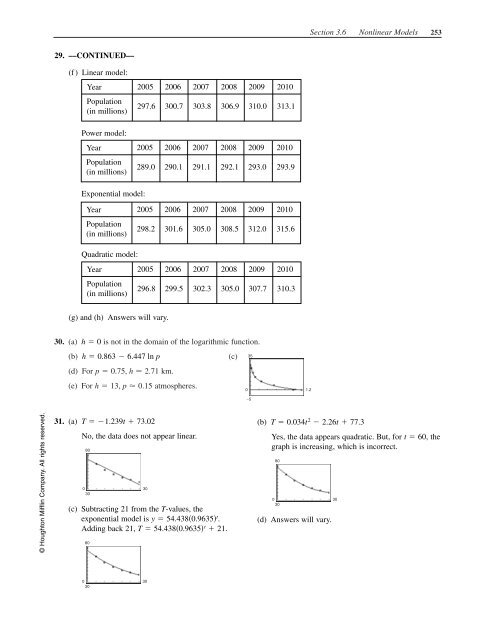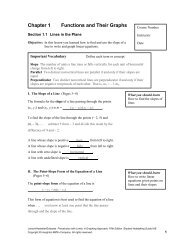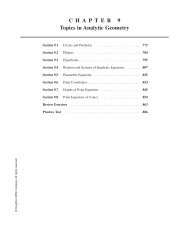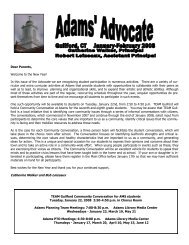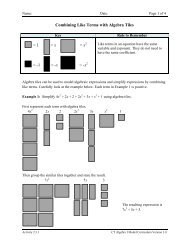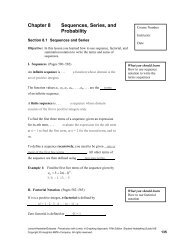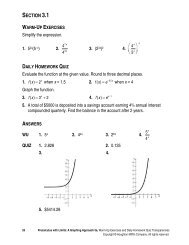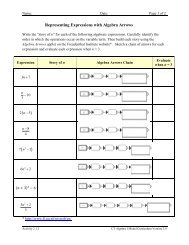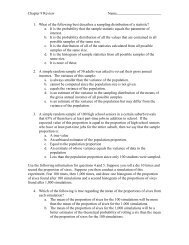Download File
Download File
Download File
You also want an ePaper? Increase the reach of your titles
YUMPU automatically turns print PDFs into web optimized ePapers that Google loves.
Section 3.6 Nonlinear Models 253<br />
29. ––CONTINUED––<br />
(f ) Linear model:<br />
Year 2005 2006 2007 2008 2009 2010<br />
Population<br />
(in millions)<br />
297.6 300.7 303.8 306.9 310.0 313.1<br />
Power model:<br />
Year 2005 2006 2007 2008 2009 2010<br />
Population<br />
(in millions)<br />
289.0 290.1 291.1 292.1 293.0 293.9<br />
Exponential model:<br />
Year 2005 2006 2007 2008 2009 2010<br />
Population<br />
(in millions)<br />
298.2 301.6 305.0 308.5 312.0 315.6<br />
Quadratic model:<br />
Year 2005 2006 2007 2008 2009 2010<br />
Population<br />
(in millions)<br />
296.8 299.5 302.3 305.0 307.7 310.3<br />
(g) and (h) Answers will vary.<br />
30. (a) h 0 is not in the domain of the logarithmic function.<br />
(b) h 0.863 6.447 ln p<br />
(c)<br />
(d) For p 0.75, h 2.71 km.<br />
(e) For h 13, p 0.15 atmospheres.<br />
35<br />
0<br />
1.2<br />
−5<br />
© Houghton Mifflin Company. All rights reserved.<br />
31. (a)<br />
T 1.239t 73.02<br />
No, the data does not appear linear.<br />
80<br />
0 30<br />
30<br />
(c) Subtracting 21 from the T-values, the<br />
exponential model is y 54.4380.9635 t .<br />
Adding back 21, T 54.4380.9635 t 21.<br />
80<br />
(b)<br />
T 0.034t 2 2.26t 77.3<br />
Yes, the data appears quadratic. But, for t 60, the<br />
graph is increasing, which is incorrect.<br />
80<br />
0 30<br />
30<br />
(d) Answers will vary.<br />
0 30<br />
30


